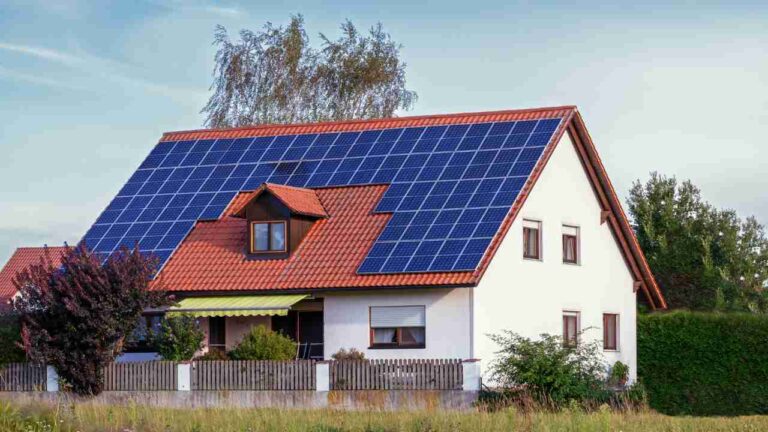As homeowners, we always strive to make the best choices for our cherished homes. Whether it’s the furniture we select or the paint colors we adore, every decision we make impacts the welcoming ambiance we seek. This principle also extends to the materials employed in constructing and maintaining our houses, especially when it pertains to our roofs. After all, they serve as our primary defense against inclement weather and external perils. Yet with an array of options in the market, it can be perplexing to determine which one is ideal for you. Let us delve into the most prevalent GAF roofing materials available for residential properties and their benefits and drawbacks.
Asphalt Shingles
Asphalt shingles, often overlooked, play a crucial role in roofing. For many years, American households have trusted these understated heroes for a good reason. They are affordable, simple to install, and available in various colors and styles that perfectly match the architecture of any house.
Fiberglass or cellulose reinforcement adds even more versatility to these shingles while maintaining their visual appeal. However, it is important to acknowledge that nothing in life is flawless; this includes asphalt shingles. Their lower price tag comes at a trade-off: a shorter lifespan and less insulation than other materials.
The quality of asphalt shingles can vary greatly, necessitating thorough research for homeowners. Despite these drawbacks, asphalt shingles remain an excellent choice for those seeking affordable, attractive, and versatile roofing options. They are commonly associated with traditional suburban styles. They can easily adapt to various architectural aesthetics.
Metal Roofing
Homeowners seeking long-lasting durability, low maintenance requirements, and a modern appearance frequently turn to metal roofing as their top choice. These roofs are uniquely constructed using various types of metal like aluminum, copper, stainless steel, and zinc to enhance their ability to withstand extreme weather conditions.
Surprisingly these roofs have the potential to last for an astounding 40 to 75 years, exceeding the longevity of traditional asphalt or wood options by a significant margin. The lightweight nature of metal roofs combined with their recyclability endears them to environmentally conscious individuals keen on reducing their carbon footprint.
While metal roofing may have a higher upfront cost, it is worth appreciating as a valuable investment opportunity. The high solar reflectance capabilities inherent in metal roofing ensure that homes stay cool and comfortable during hot summer months, obviating the need for excessive air conditioning expenses.
Aesthetically speaking, metal roofing perfectly complements various house styles, including bungalows, cabins, contemporary homes, and cottages, adding to their allure. Homeowners wanting to harvest rainwater can rest easy knowing that metal roofing’s smooth surface effectively prohibits debris accumulation, making it easier to collect and store rainwater.
Composite Shingles
Composite or synthetic shingles are becoming increasingly popular for residential roofs. And with good reason. These shingles are crafted from recycled materials or engineered polymers, making them eco-friendly and durable.
What sets synthetic shingles apart, however, is their striking resemblance to authentic cedar shake shingles or slate tiles. Manufacturers use molds of the real thing to create a look that is stunningly realistic. Neighbors will do a double-take as they pass by your house, wondering how you were able to afford such a luxurious roof.
But there’s more to these shingles than just their appearance. Synthetic shingles have an impressive impact rating, meaning they are highly resistant to damage from weather events or other external factors. Their long lifespan also makes them a wise investment for homeowners looking to save money in the long run.
Cedar Shake Shingles
There’s something undeniably charming about the rustic allure of wood shingles and shakes. Dating back hundreds of years, this traditional roofing choice adds a touch of natural beauty and texture to any residential roof. With both handmade shakes and machine-cut shingles available, homeowners can go for a more rugged or polished look.
While cedar, redwood, and southern pine are typical wood materials used for shingles and shakes, they may pose some drawbacks depending on the climate and local fire codes. Moist and fungal-prone environments can lead to mildew or rot, and fire safety concerns make it important to search for Class A fire-rated wood roofing products coated with fire-resistant materials.
Despite these cons, wood shingles and shakes remain a top choice for many homeowners who adore its rustic appeal. Ideal for bungalows, Cape Cod, cottage, Craftsman, and Tudor-style homes, wood shingles are a great way to add natural elegance to a residential property. Although wood shingles and shakes may require extra care and attention, the investment is worthwhile and can offer around 25 to 30 years of life.
After discovering the various roofing materials favored by homeowners for their residential properties, it’s evident that asphalt shingles are the most commonly used. Despite the many options available, asphalt shingles win out due to their affordability, durability, and versatility in design.






